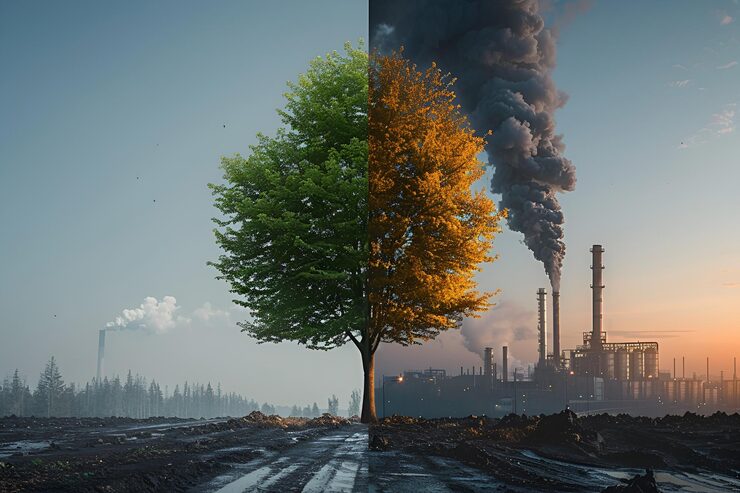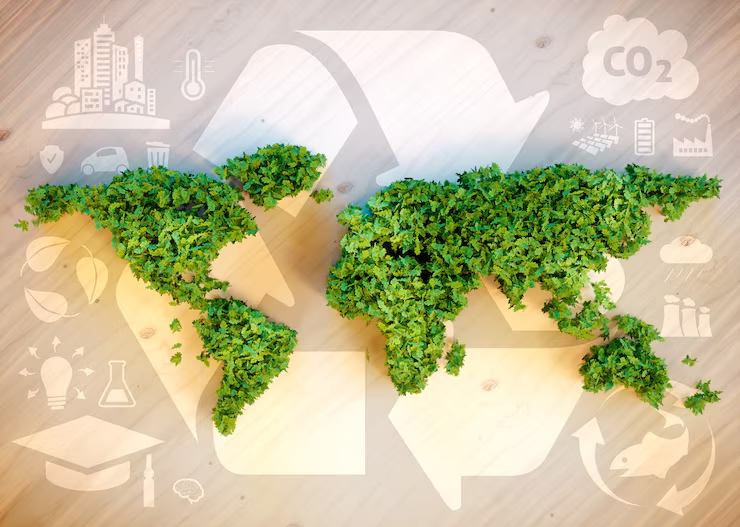Carbon Removals vs. Reductions
The 2025 Debate

Removals or reductions? A new study warns leaning on offsets risks national goals. What's your take? As the world races toward net-zero by 2050, this question is sparking heated debates across boardrooms, policy halls, and carbon markets. In 2024–25, the voluntary carbon market remained small (≈USD 0.5–4 bn depending on methodology), even as regulated ETS markets total hundreds of billions; quality and integrity are driving a slower, more selective rebound. with businesses and governments grappling over whether to prioritize cutting emissions at the source (reductions) or investing in technologies and projects that pull carbon from the atmosphere (removals). Both are critical to combat climate change, but their roles, costs, and impacts differ sharply. This blog dives into the heart of the 2025 debate, unpacking the science, economics, and real-world applications of carbon removals versus reductions. For companies aiming to lead in sustainability, understanding this balance is key to aligning with global goals and staying competitive in a green economy. Let’s explore the stakes and find the path forward.
Understanding Reductions: Cutting Emissions at the Source
Carbon reductions involve slashing greenhouse gas emissions directly from operations, think factories switching to renewable energy or vehicles going electric. Reductions target Scope 1 (direct emissions from owned sources), Scope 2 (purchased electricity), and Scope 3 (supply chain emissions). They’re the backbone of net-zero strategies, as they address emissions before they’re released, aligning with the Paris Agreement’s goal to limit warming to 1.5°C.
In 2025, reductions are driven by innovation. Steelmakers are prioritizing EAF transitions and scrap-based routes; for example, Tata Steel is shifting Port Talbot to EAFs by 2027 in a plan expected to dramatically lower CO₂ versus blast furnaces. In shipping, leaders like Maersk are adding dual-fuel methanol newbuilds and efficiency retrofits to cut lifecycle emissions across the fleet. These efforts lower carbon footprints directly, boosting efficiency and brand value. Investors and NGOs increasingly scrutinize offsets and reward credible decarbonization; groups have warned that over-reliance on credits can slow real emissions cuts.
Reductions, however, come with challenges. Upfront costs for technologies like carbon-neutral fuels can exceed millions, and Scope 3 emissions, often 70 percent of a company’s footprint, are tough to tackle due to complex supply chains. Yet, reductions are non-negotiable for credibility, as stakeholders demand real decarbonization over offset reliance.
Carbon Removals: Pulling CO2 from the Air

Carbon removals capture and store CO2 already in the atmosphere, either through nature-based solutions like reforestation or technology-based methods like direct air capture (DAC). Removals are critical for neutralizing residual emissions that are impossible to eliminate entirely and achieve net-zero. In 2025, the voluntary carbon market for removals is surging, with prices for high-quality removal credits reaching 100 dollars per tonne, driven by demand from tech giants like Microsoft.
Real-world examples highlight removals’ potential. Nature-based ARR removals (e.g., large-scale reforestation in Africa/LatAm) are expanding, but outcomes vary widely and credits face quality and permanence scrutiny. These projects show removals can deliver measurable climate benefits, especially hard-to-abate sectors like aviation.
The 2025 Debate: Balancing Act or Risky Shortcut?
The debate in 2025 centers on strategy and impact. The SBTi Net-Zero approach centers on rapid value-chain reductions and tightly circumscribes the use of credits; proposals to expand their role in 2024 drew significant criticism from climate groups. Reductions are seen as more permanent and impactful, directly addressing emissions sources. For instance, a cement plant switching to solar power cuts emissions consistently, while a reforestation credit depends on long-term land management.
However, removals are indispensable for residual emissions. Major assessments indicate multi-gigaton CDR will still be needed by mid-century (often up to ~10 Gt/yr by 2050) in addition to aggressive emissions cuts. The risk lies in greenwashing; firms buy cheap, low-quality credits to mask inaction. Investors demand verified, high-quality removals, per market trends, pushing for transparency via blockchain tracking.
The economic lens sharpens the debate. Reductions often yield long-term savings energy-efficient plants cut costs by 20 percent, per a 2024 EY study, while removals are pricier upfront. Yet, removals offer market opportunities: voluntary carbon markets grew 15 percent in 2024, with removal credits fetching premiums. In India, BRSR/Core tightens ESG disclosure and assurance; in the EU, CBAM requires reporting and later paying for embedded emissions.
Real-World Examples: Lessons from the Field
Verified cases illustrate the balance. In 2024, Unilever reduced Scope 1 and 2 emissions by 40 percent through renewable energy while investing in reforestation credits for Scope 3, achieving net-zero for its European operations. This dual strategy boosted its market share by 10 percent among eco-conscious consumers. JSW Steel has announced decarbonization measures and intensity targets, but CBAM compliance hinges on embedded emissions reporting and pricing — voluntary offsets don’t count.
Microsoft has become the largest corporate CDR buyer, contracting ~5 Mt in FY23 and expanding in 2024–25 across nature-based and durable pathways. These firms show reductions as the foundation, with removals as a strategic complement, not a substitute. In contrast, companies leaning solely on offsets faced backlash; 20 percent lost investor trust in 2024 for unverified credits, per a Bloomberg analysis.
Challenges and Solutions

Reductions demand heavy investment and supply chain coordination. SMEs, with limited budgets, struggle with Scope 3 data, where only 25 percent of suppliers report emissions. Solutions include AI-driven tools that cut tracking costs by 30 percent. Removals face scalability and cost barriers - verified credits are closing these gaps, ensuring quality and trust.
Policy plays a role. The EU’s 2025 carbon market reforms prioritize high-quality removals, while India’s updated BRSR guidelines encourage reductions over offsets. Collaboration, like the UN’s 2024 blockchain pilot for 500,000 wind farm credits in China, shows how technology and policy can align both approaches.
The Path Forward for Businesses
The 2025 debate isn’t about choosing sides—it’s about strategy. Reductions are the priority for immediate impact and cost savings, while removals tackle unavoidable emissions and drive innovation. Businesses should start with deep emissions cuts: audit Scope 1, 2, and 3, invest in renewables, and optimize supply chains. Complement this with high-quality removals, verified by platforms like Verra or Gold Standard, to address residuals.
For Indian firms, aligning with BRSR and CBAM ensures compliance and market access. Globally, investors favor companies balancing both removals and reductions, offering higher funding rates.
Join the Net-Zero Revolution
The removals vs. reductions debate are shaping a sustainable future. By prioritizing reductions and strategically using removals, businesses can lead with impact and trust. Explore how you can track your business’s carbon footprint and invest in verified carbon offsets using the tools by World of Circular Economy. Write to us at contact@worldofcirculareconomy.com for more information.




